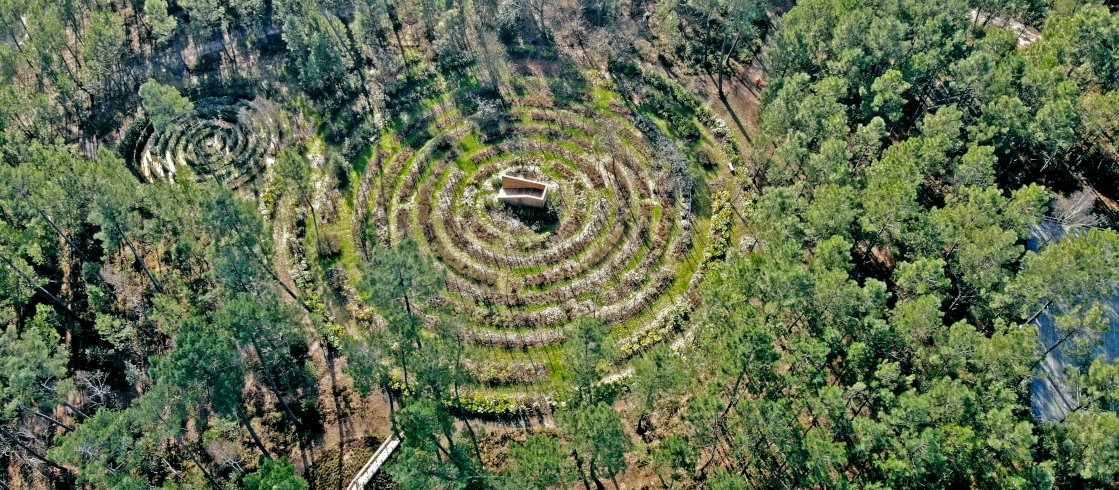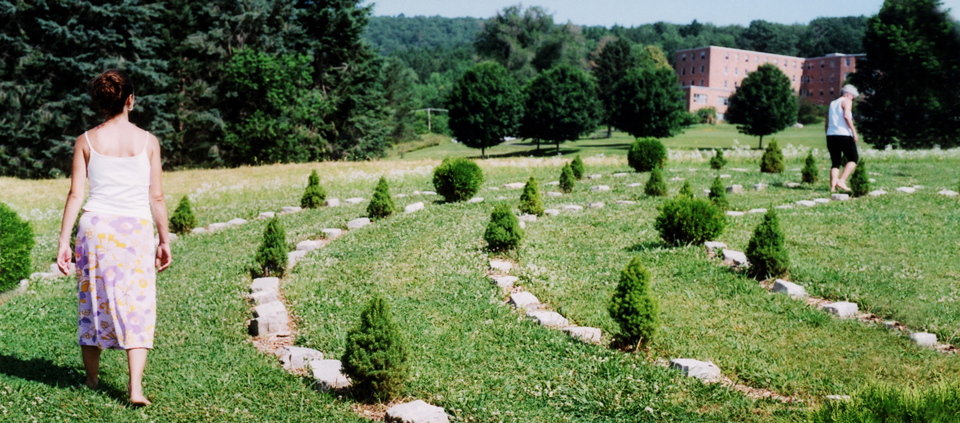Labyrinth in the Australian Botanical Gardens, Shepparton

Community, local government and health in Greater Shepparton have come together to construct a nature-based labyrinth in Shepparton, Victoria.
Evidence that walking labyrinths delivers health and wellbeing benefits (both physical and mental) is growing. Labyrinths are used all over the world, in different countries and cultures, as a tool to promote mental and physical health. Already in Australia they are increasingly being built in hospitals, hospices, retreat centres, churches, parks and gardens – and research is starting to attest to their benefits.
The labyrinth offers many benefits, including:
- an inviting way to spend time in nature
- a way to clear the mind and focus attention
- a healthy ‘time out’ – an alternative to a smoking break
- a calm environment in which to prepare for dealing with challenging situations.
- a place to regain calm, focus, balance and perspective
Integrating a labyrinth within the existing native flora in the botanical gardens provides the additional benefits of connecting in nature. The labyrinth will provide a new dimension in recreation and health care for the people in the area, as well as encourage more locals and visitors to spend time the stunning nature spaces around Shepparton’s city centre.
The proposal, supported by active, dedicated members of Greater Shepparton’s health community is to situate the labyrinth in a nature-rich location that will draw people to the labyrinth and encourage regular use.
How can a labyrinth facilitate improved health and wellbeing? Walking the labyrinth is a form of mindfulness – a walking meditation. It can be used by people across a range of ages and abilities (including those using wheelchairs or walking frames) and provides a space for gentle exercise, reflection or time out. There is now increasing evidence that any form of mindfulness has beneficial effects on both our physical and mental health. Research also shows us that practising mindfulness outside in nature improves our health.
Those who walk labyrinths repeatedly might experience something different each time – a new insight, a sense of peace and calm. Walking a labyrinth can be a solitary pursuit, or as a means to connect with other people. Research, has shown some benefits for mental health issues, sleep, blood pressure, problem solving, improving stress (including at work), or just providing gentle exercise, connecting with other people, and connecting with your surroundings.
Why do we need labyrinths in regional areas like Shepparton?
People living outside major metropolitan centres in regional towns and rural areas have an increased risk of some health problems compared to their city-based counterparts. Instances of both mental and physical problems, such as obesity (a risk factor for diabetes, heart disease, osteoarthritis, depression and many other illnesses) and suicide, increase in rural areas. A number of indicators for health reveal that, on average, rural populations are more sedentary. There may also be fewer health professionals per capita to help people prevent or manage potential or existing conditions.
Motivating people to change their behaviour to include more healthy ways of living can be hard – we all know what we should do, but it’s hard to get started if we don’t see instant results. The labyrinth is a gentle way of getting started – it doesn’t take long to walk it, it doesn’t feel like ‘exercise’ or ‘stress management’, yet it is known to provide similar benefits.
 Those who have already walked a labyrinth and experienced its benefits may have found positive physical, mental, emotional, spiritual or social outcomes from the gentle, meditative walking into the centre and out again.
Those who have already walked a labyrinth and experienced its benefits may have found positive physical, mental, emotional, spiritual or social outcomes from the gentle, meditative walking into the centre and out again.
Labyrinths don’t represent any particular culture or religion, appealing to people from all backgrounds and walks of life. Labyrinths invite people to tap into their inner resources – offering a way of addressing the spiritual, emotional, and psychological aspects of healing.
The evidence for the benefits of meditation and mindfulness is undisputed – the labyrinth represents a quiet place where the simple act of walking offers a proactive ‘task’ to undertake within a quiet haven, enabling people to learn to deal with stress in a positive way.
Please donate to support the this project.